Last week we started to unveil our new Regency fashion pieces. I started to explore the basics of what constitutes “Regency dress” and why we love it. This conversation very easily gives way to the hot topic in costuming and historical fashion right now: the Netflix series Bridgerton and how it got the clothing right and wrong. There are things to love, some things not to love so much, and a lot to say on the topic. As I know a lot of readers are enjoying the show, I thought it might be fun to dive into some of these points.
And always, I would love to hear from you about what you thought. Did you enjoy the Bridgerton costumes? Do you plan on creating your own Bridgerton look sometime this year?
Bridgerton costumes: Regency with a twist (and not taken too seriously)
It is important to begin a discussion about the costumes of Bridgerton by recognizing that the creators were providing an escapism experience of the historical fantasy type. All aspects of the production were meant to provide an experience for the viewer, rathter than build up bragging rights about historical accuracy. In interview, costume designer Ellen Mirojnick has been quite forthcoming about this:
“If you’re able to go into a romantic love story as if you were reading it, are you going to be a historian? Or are you going to use your imagination?… We’re not historians. And we’re telling a luscious story, and we’re hoping that you use your imagination as we tell it, and you get sucked in, and you love the story that you’re watching.”
And many of us fashion history lovers get this. I will feature the insights of fashion historian and content creator Karolina Zebrowska in this post. Despite her critique of some of the costuming choices that I will mention, she has also said:
“To me, it’s not a historical romance, it’s a historical fantasy…The whole world is created, it didn’t happen. It’s a world where you can refuse a Prussian price because you’re not in love with him. A world where aristocrats invite their boxer friends to their weddings and no one is offended. A world where women only wear their dresses once and attend all-female gambling clubs…And in that world, all of these fluorescent colors, zippers, modern fabrics, visible eye shadow, machine embroidery, and glitter, you know, it totally fits in.”
No one can deny that it is a very aesthetically pleasing show to watch and an impressive costuming accomplishment. It is predicted that 7,500 costumes were made for the show and that Daphne herself wears over 100 different gowns (I want her job!). Similar to the film Marie Antoinette (one of my faves!), who doesn’t enjoy watching Bridgerton simply because it is so pretty?
All that being said, there are some strong opinions among fashion historians and enthusiasts (over here!) about some of the creative decisions that were made about the costumes. I have identified five primary themes as far as what I have heard people become the most passionate about.
The use of the corset
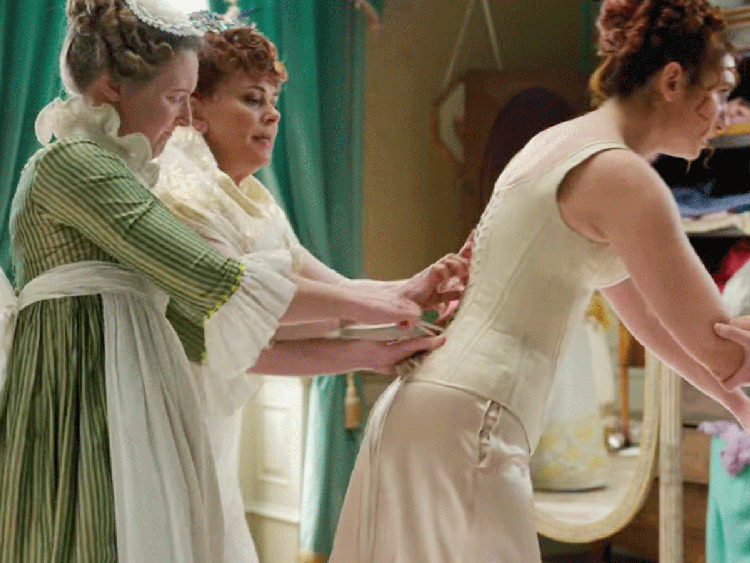
The opening scenes of the show portray an over-the-top, inaccurate, and stereotypical portrayal of one of the Featherington daughters being tight-laced. Grasping her maid’s hand, she struggles to withstand the pain of the coming of age ordeal. And of course, she is laced so tight that she passes out at the ball.
No! This is such an overdone theme in portrayals of the past, so much so that I was really taken back by seeing it in such a recent show. Not only does this perpetuate stereotypes of women from the past, it is completely inappropriate for use in a show that uses the Regency dress.
Said the lovely fashion historian Mina Le:
“The interesting thing about transitional stays and stays in general corsetry during the Regency period is that they were very unrestricting. The silhouette of the Regency period was very natural and flowing and focused a lot on drapery. So it was really weird for me to see tight lacing in this show. Like, what is the point of tight lacing? What are you tightening?”
And Karolina Zebrowska agrees, saying in her Bridgerton costumes YouTube video:
“Bridgerton, unfortunately, perpetuates the “killer corset” trope from the very first scene. If someone wanted to shoot something especially to just piss me off, that is what you would do…they are also worn extremely tight, which makes no sense. It’s the Regency era. There’s stays – they’re fully made of cotton, they have no bonings, no trying to make them tighter to make your waist nipped in more, is kind of pointless.”
Also quite obvious to anyone with knowledge about clothing of the past: the corsets/stays were worn right next to the skin, which was NEVER done. A chemise would have come first, protecting the skin from any chaffing as seen in the show.
Daphne’s dresses don’t change from night to day
Although the main character Daphne was blessed with beautiful gowns, I found it quite boring that they hardly changed from night to day. Combined with the color palette that also hardly changed, to me, it made her in general less interesting to watch.
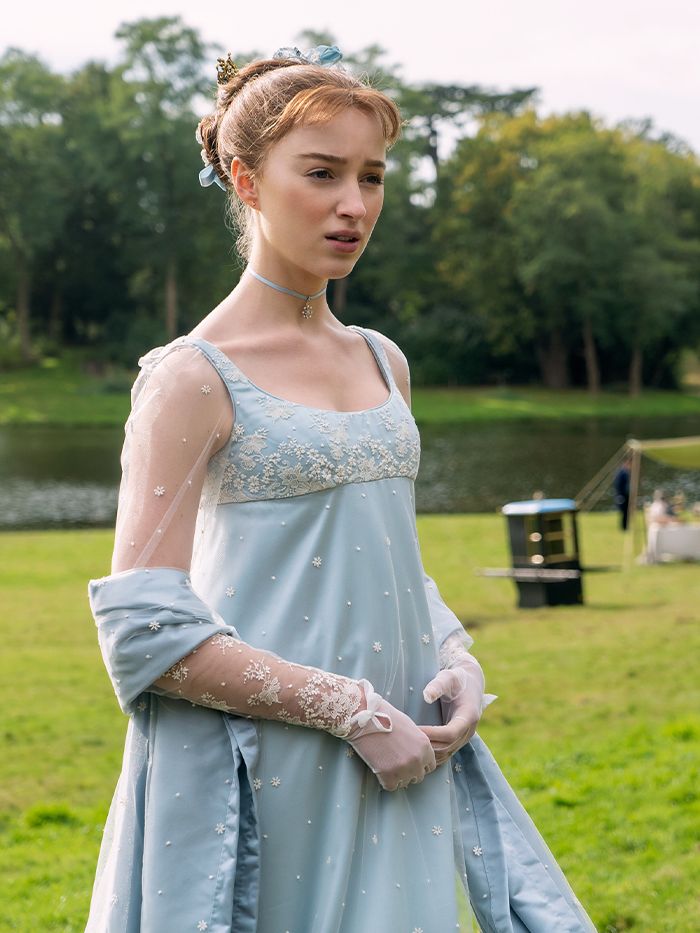
Let’s break this down.
First of all, she was given a train in both her day and evening wear. Trains were reserved for after-dark occasions and would have never been worn for things such as tea time visits or strolls in the park. Her day gowns were often grand and made of the same fine fabrics as her ball gowns.
And while we see short sleeves trending during the Regency, this was only for ball gowns. Yes, short-sleeved dresses were made, and you can easily see them in museums, etc. But they were worn over a chemisette with long sleeves and a high neck. Regardless of a woman’s place in society, she would have never gone out in evening wear and with so much skin exposed as Daphne does during the day. I found it quite awkward and confusing to watch. I will say more about this in my point about modesty.
Lady Featherington’s silhouette
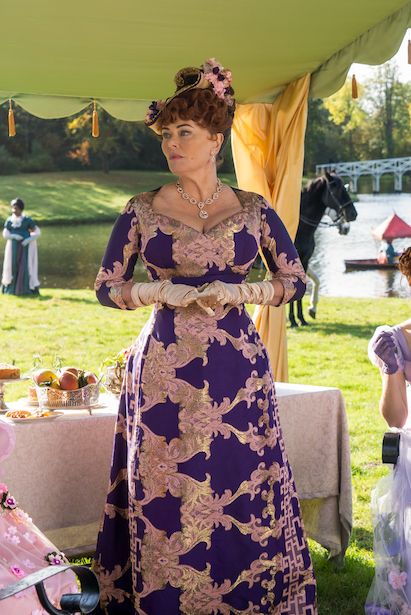
Fashion historians hated Lady Featherington’s dresses! This was something that didn’t quite stand out to me while watching, probably because I was so distracted by Daphne’s trains and uncovered arms. But if you take a look – she is always shown in a semi-empire waist but with the rest of the dress cut to highlight the natural waist. It’s so modern that I failed to notice.
Says Karolina Zebrowska:
“I think the biggest historical abomination in this series in the form of a character is Mrs. Featherington. Mixing a retro influence with historical clothing is absolutely nothing new…but it’s kind of like mixing a magic potion, you have to mix the ingredients really well. Otherwise, it will explode. Mrs. Featherington’s character has a hairstyle that is kind of 1960s or 1940s, depending on which side you look at. She has a 2010 type make-up, but I think that the weirdest part of her look is her silhouette. What is that? What is going on? For some reason, they thought it would be a good idea to take a Regency era shill, which is loose, flowing skirts, which ends right under your boobs… they decided to take that and make it tight and fitting? You don’t take a raised waistline and try to make a natural waistline. It’s just not right.”
And Mina Le:
“…they’ve gone too far. Lady Featherington’s empire waist line, for example, is completely unnecessary because they decided to sinch her dress at the natural waistline, which completely defeats the purpose of having any type of empire waist distinction… the way their cut her dress makes it so modern that I think if you looked at her dresses out of context, no one could tell that they were even partially inspired by the Regency period. For her character I thought it was a missed opportunity to over exaggerate Regency fashions in a very theatrical way.”
I agree – what happened there?
Modesty violations
I understand that this is a historical fantasy, but some of the decisions about how to keep it Regency while thinking outside of the box made little sense to me. I had to go back and look to see if the show creators had given the show an actual date in time, as I started to think that it was a complete fantasy portrayal.
I loved Zebrowska’s take on this:
“Another thing that bothered me was disrespecting the societal norms regarding fashion at the time. If you make a show where societal norms literally decide the fate of the main characters, shouldn’t those norms also be accentuated when it comes to clothing?”
Where are the gloves?
What are some of the norms that Bridgerton deviated from? For starters, I was SO thrown off my Daphne going on calls and errands without gloves on. I thought to myself “has she just come from upstairs? Why is she walking around like that?” In addition to traveling around town in short sleeves without gloves, she was rarely (if ever?) wearing a coat or shawl. This is far too huge of a leap from Regency standards for me.
A bonnet-free Regency London?
And of course, there is the glaring absence of caps and bonnets. From what I have read, this was a deliberate creative decision made by the producers as bonnets in particular are hard to film. I can understand this, but in addition to the lack of bonnets were the main characters, debutantes, appearing in public with their hair down. I feel this was a missed opportunity as well, as it made Daphne especially appear far too young to be presented in court, much less married.
Decolletage
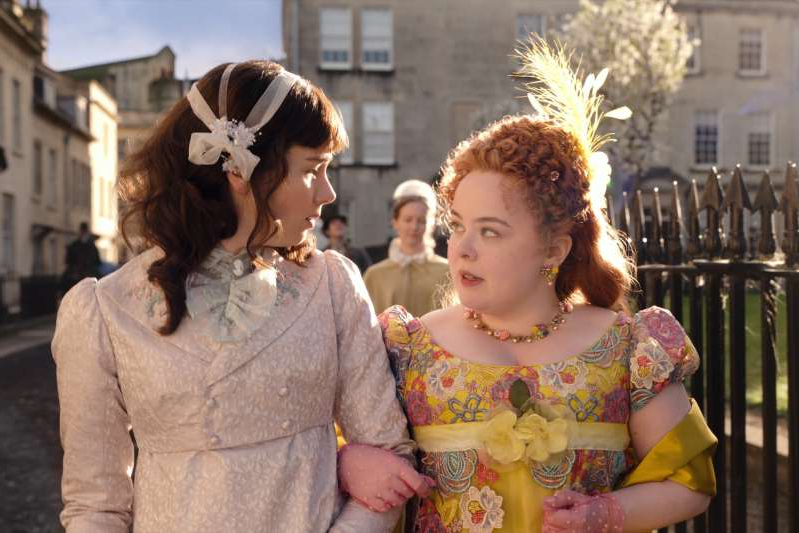
Again, this was an evening look. And for a show that has so much of its plot centered around the proper behavior of women, Why not save it for the ball scenes? During the day, a woman would have yes, worn an empire waist, but her arms and bust would have been covered by a chemisette and jacket, and her dress may have been long-sleeved. Annoyingly, Eloise’s character is the only one who wears a proper day-style, with a high neckline and long sleeves.
And along those lines, the last theme I have identified in almost all conversations about Bridgerton’s costumes:
And the winner is, Eloise
I have heard from many that Eloise had the best and most accurate costumes, as she was the one character who wore appropriate day clothing. I have to agree, though I didn’t like how this was used to portray her as the token feminist who doesn’t feel the need to conform to societal norms. She was the only one adhering to the norms of dress. And because she was dressed to stand out and was the only woman wearing clothing with high necklines and long sleeves, I felt she was meant to be seen as manly to accentuate her feminism, and I didn’t really appreciate that.
Learn more:
Bridgerton Tailor Explains Bridgerton Men’s Costumes
Mina Le: Let’s Talk About the Bridgerton Costumes
HauteLeMode: The Bridgerton Costumes Make No Sense
Karolina Zebrowska: “Bridgerton” Costumes Are a Mess, But They Kind Work
Abby Cox: Costuming in Historical Fantasy vs. Historical Accuracy in Movies and TV
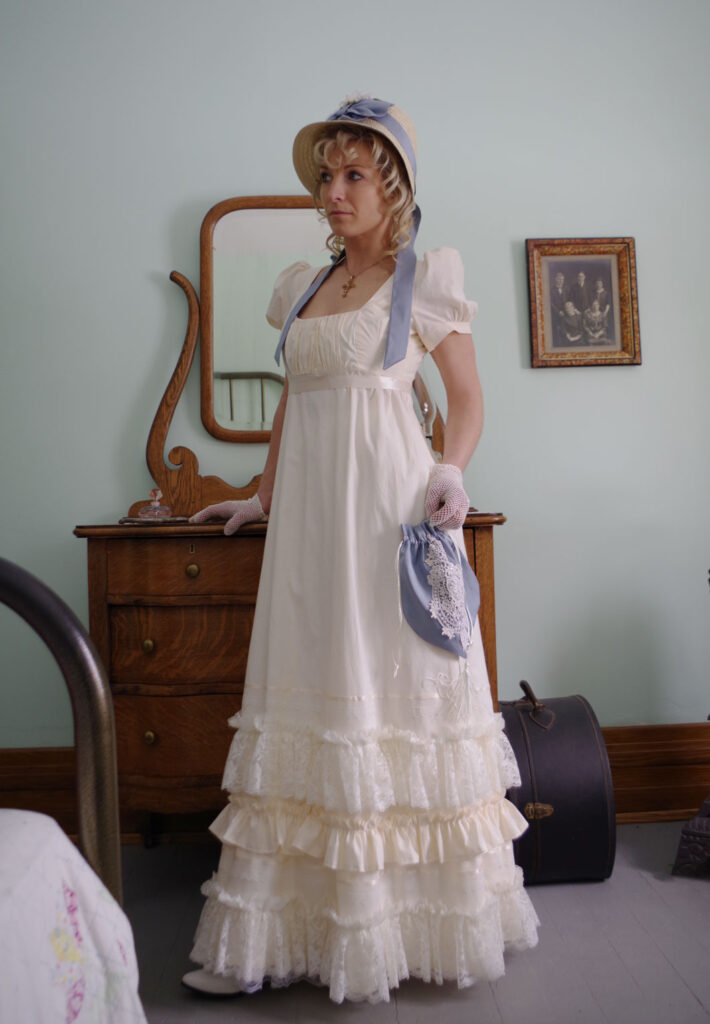

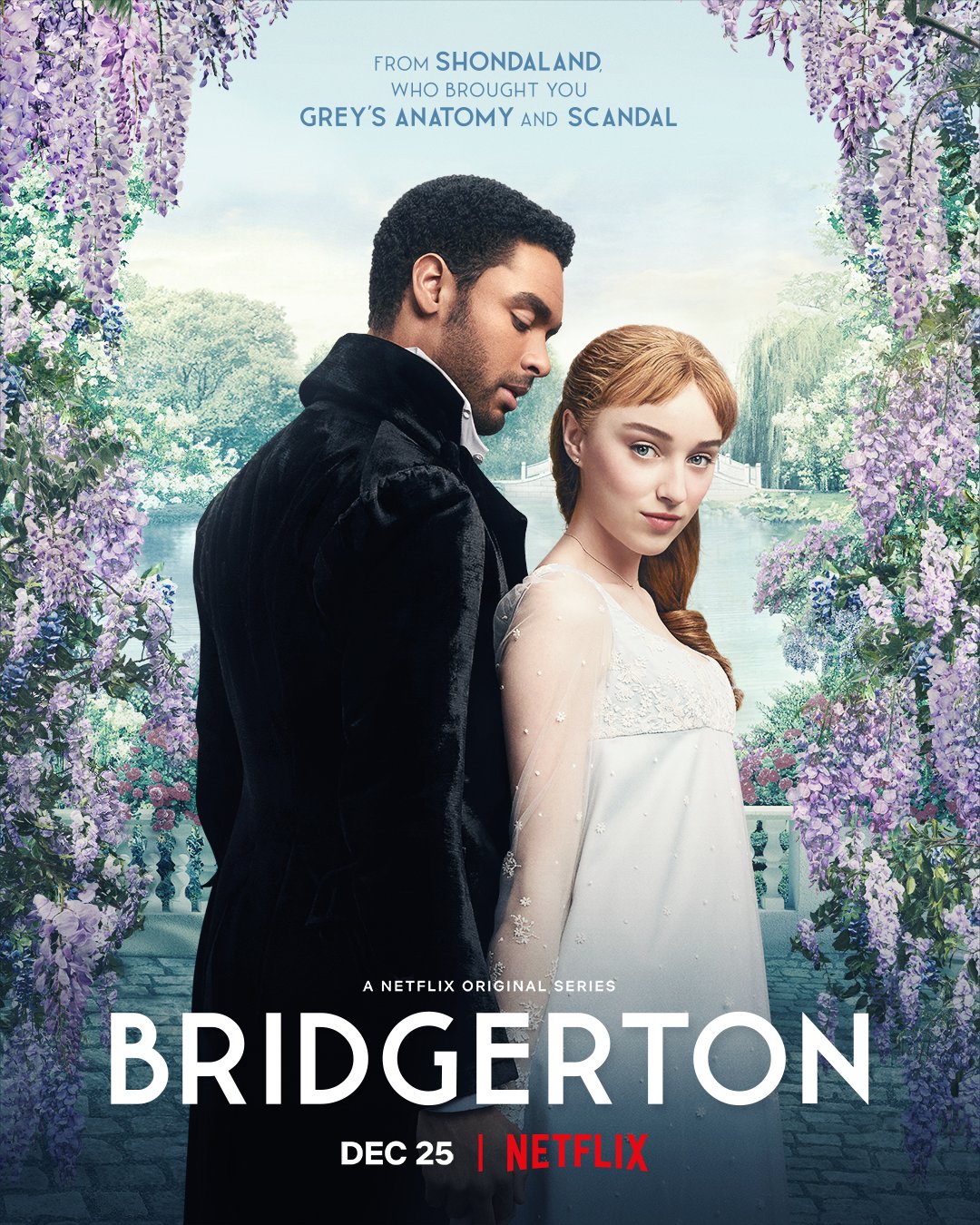



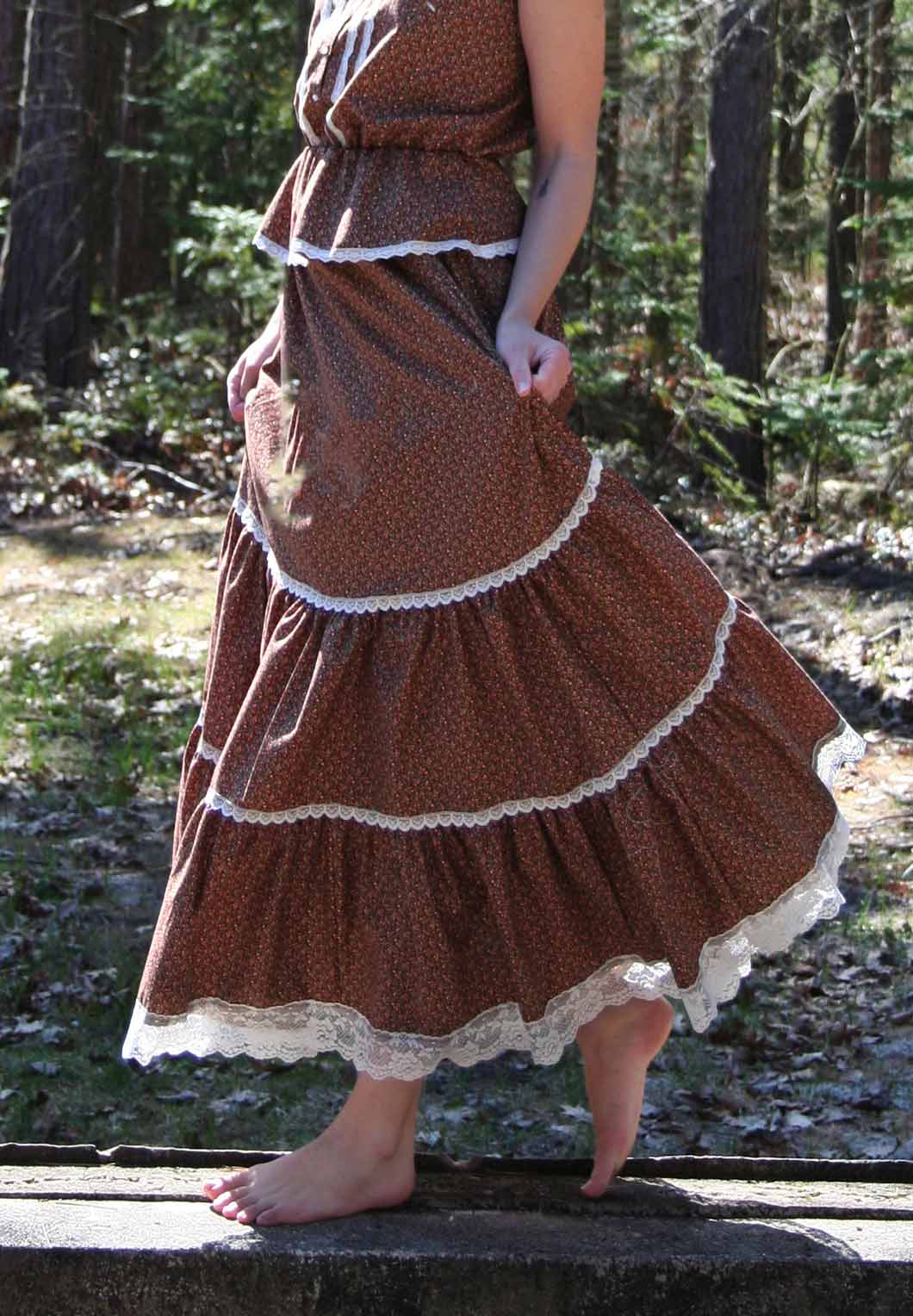
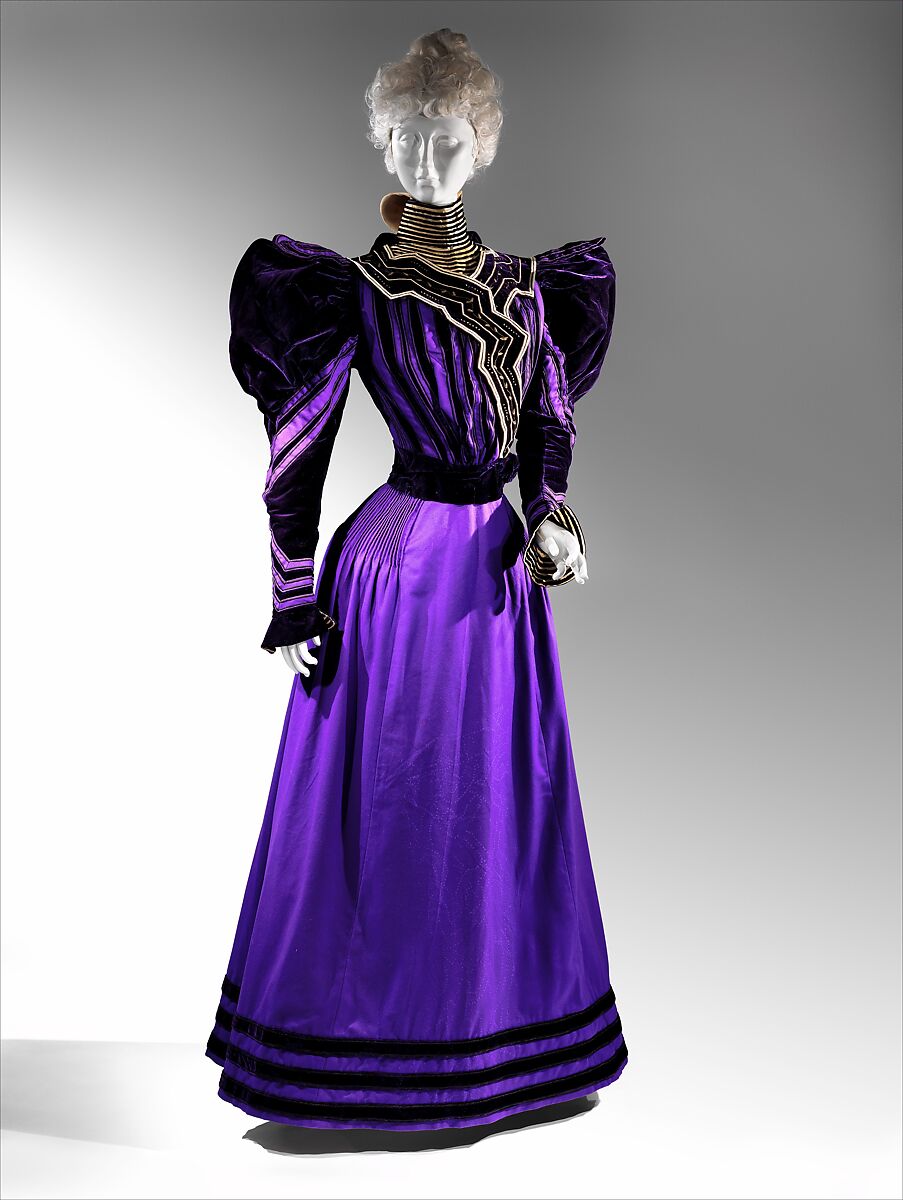

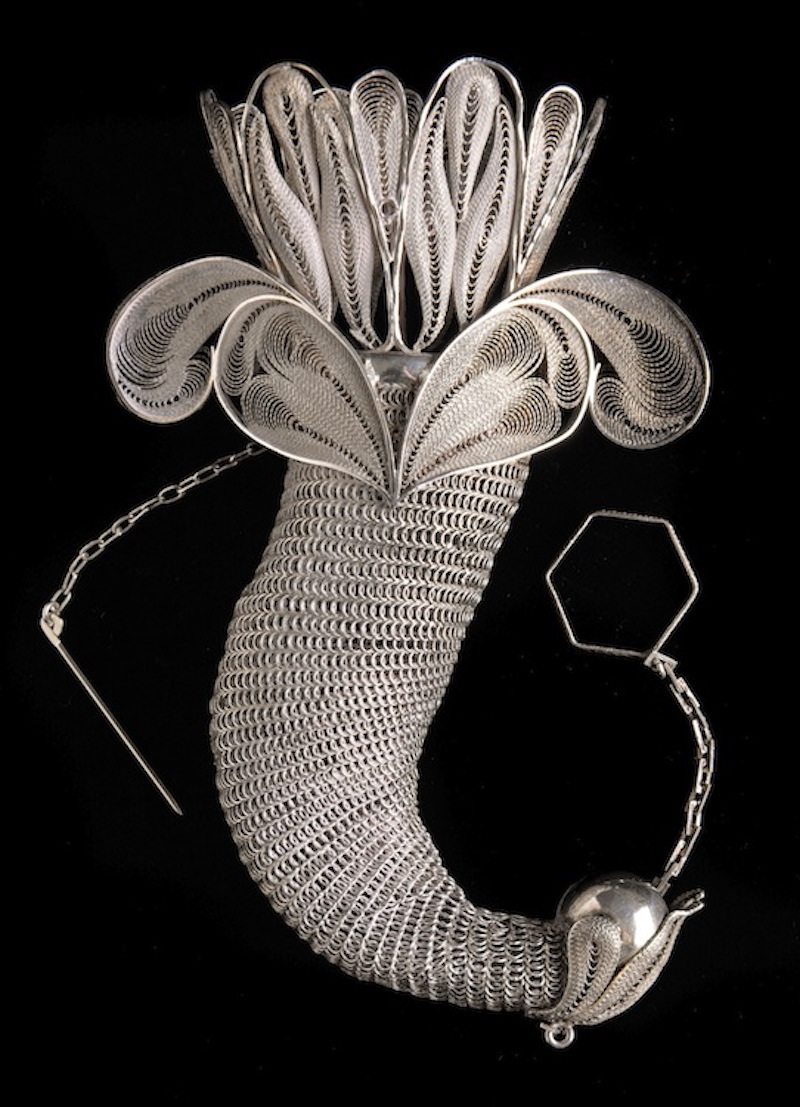
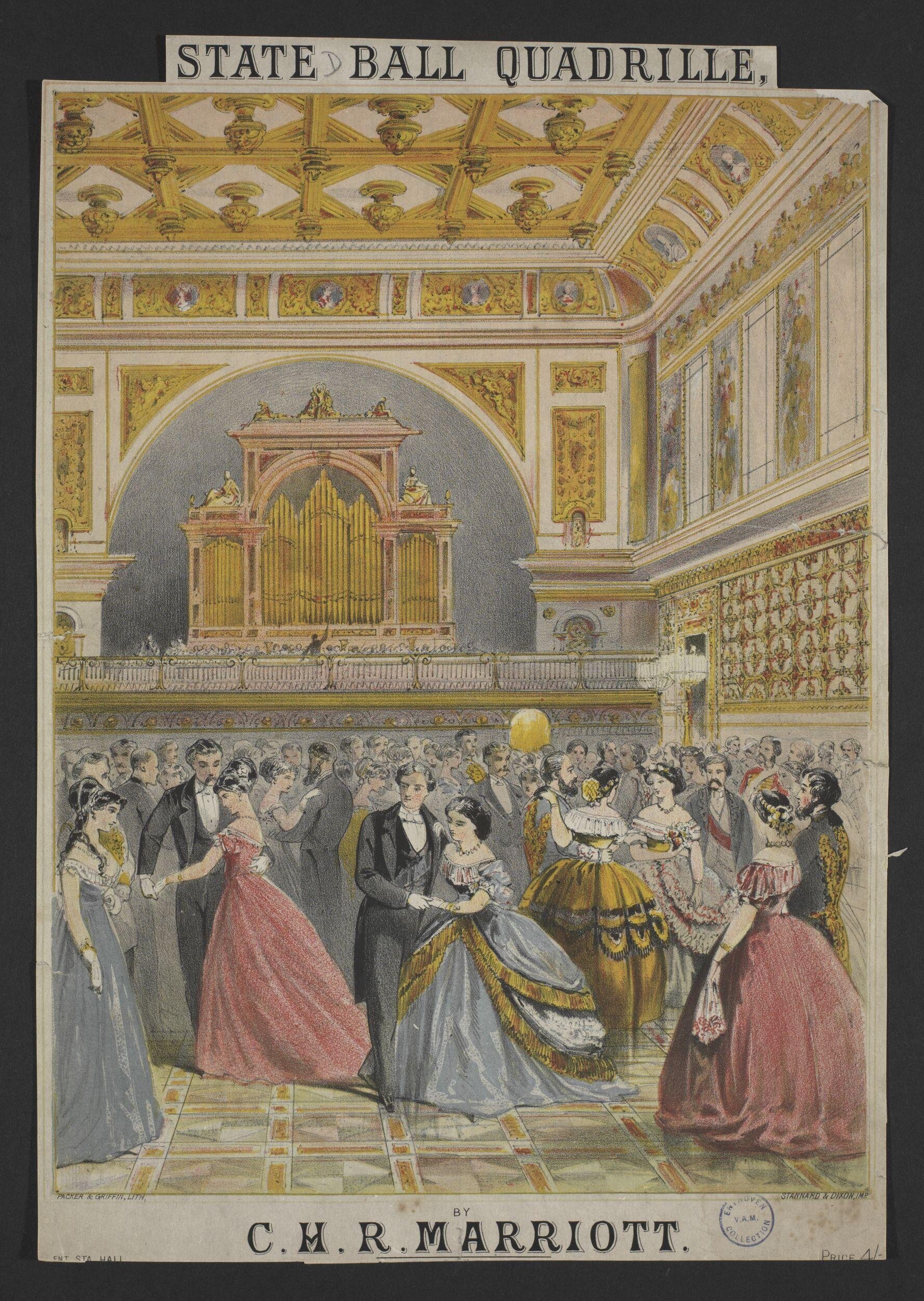
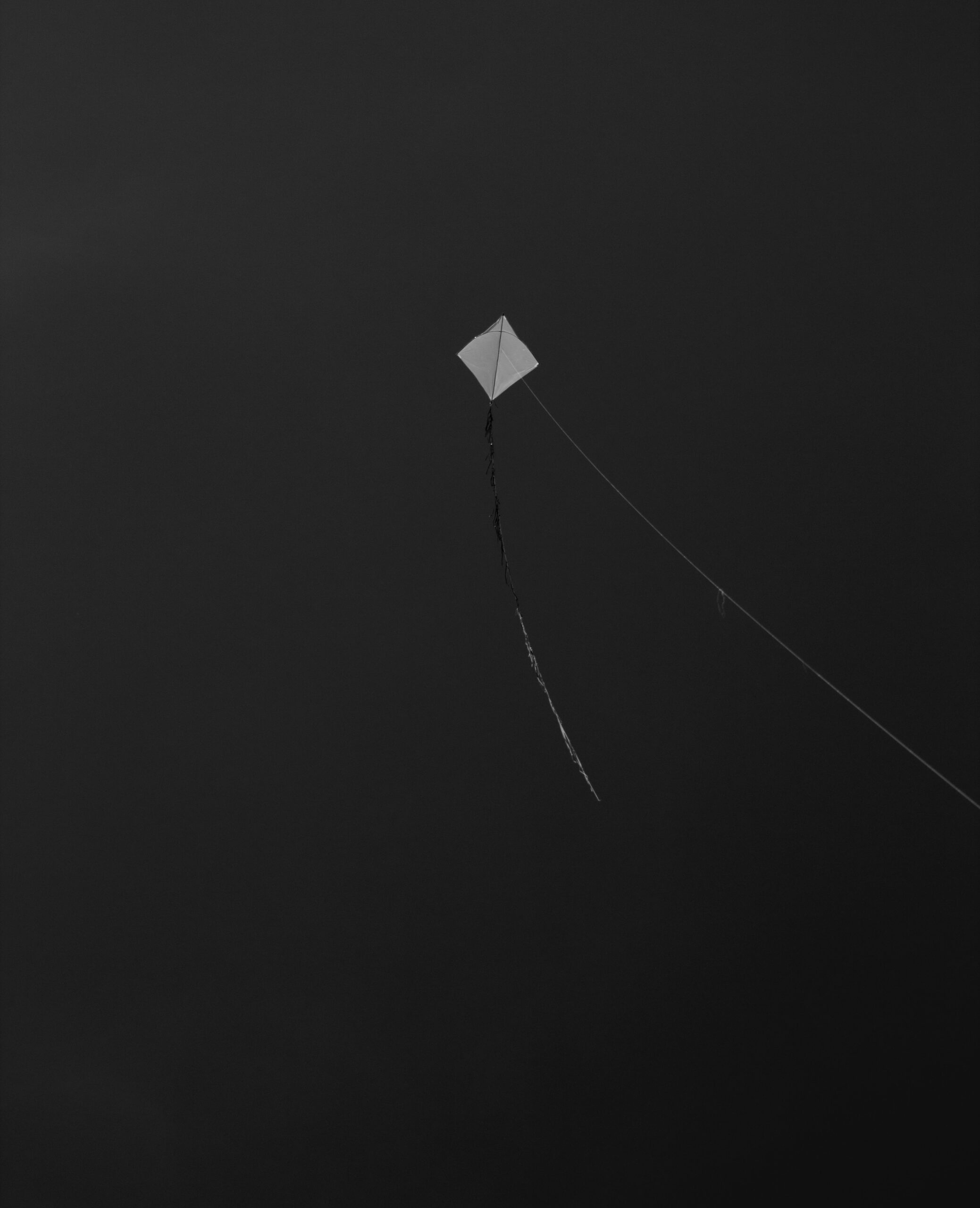
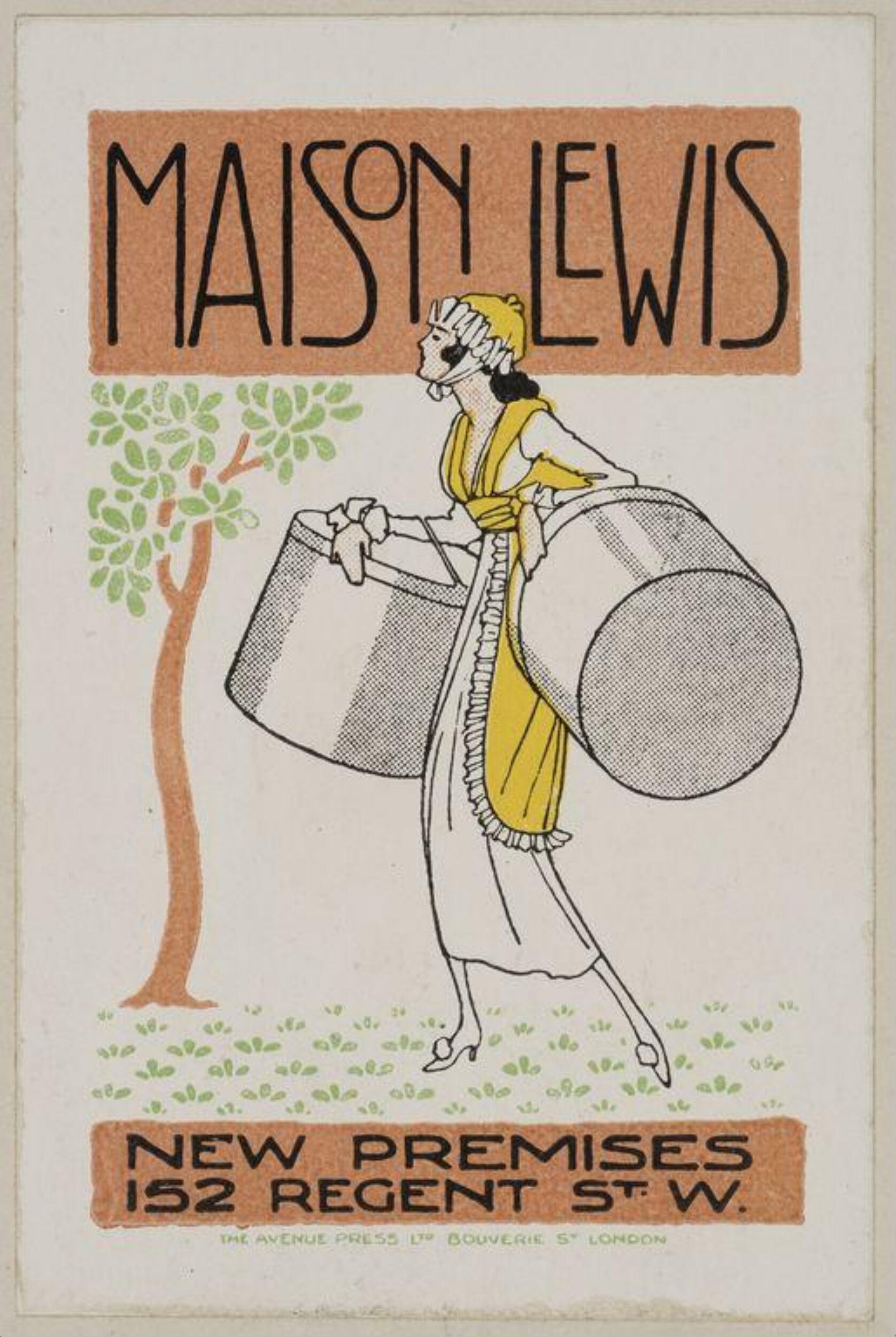
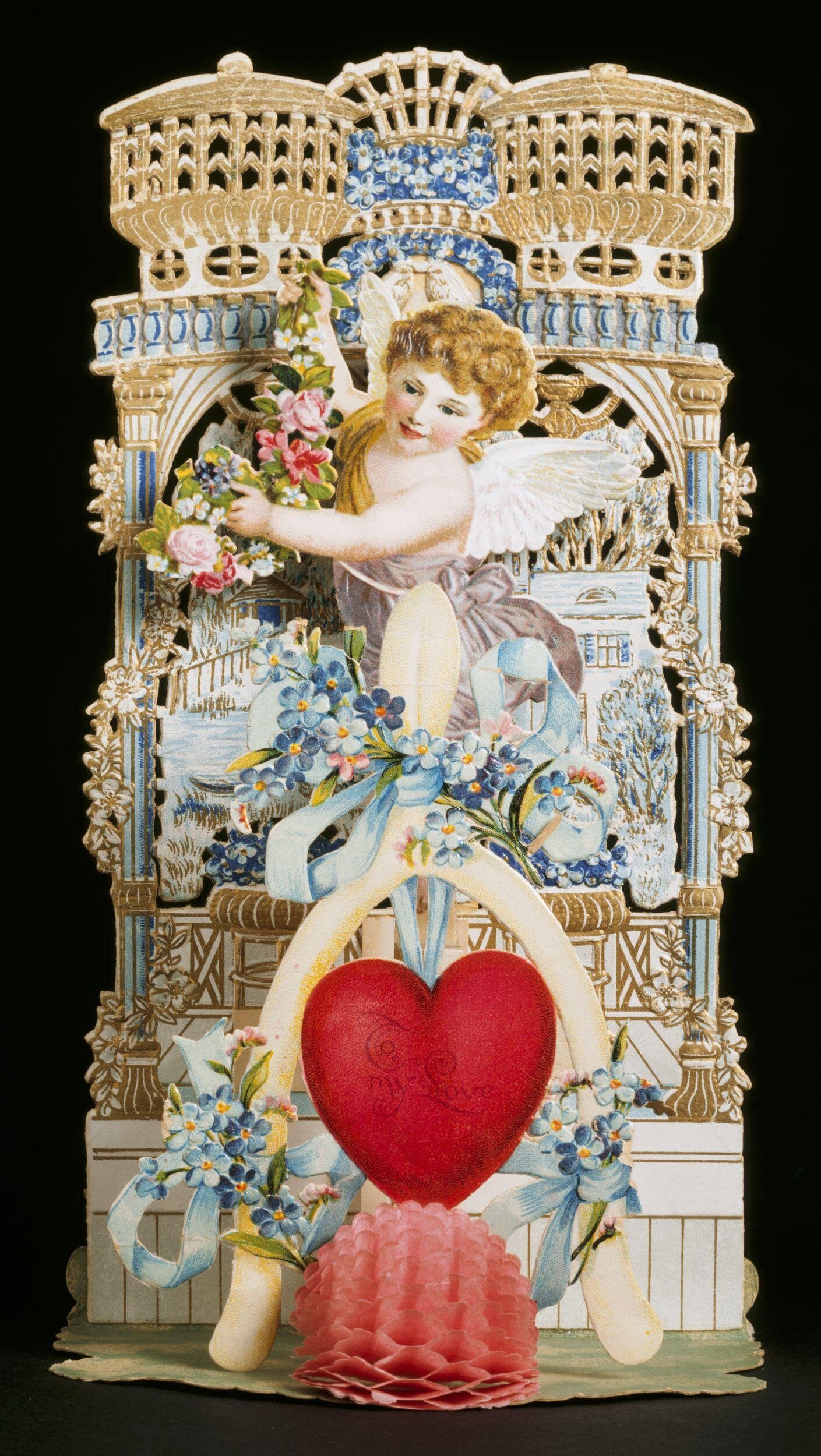
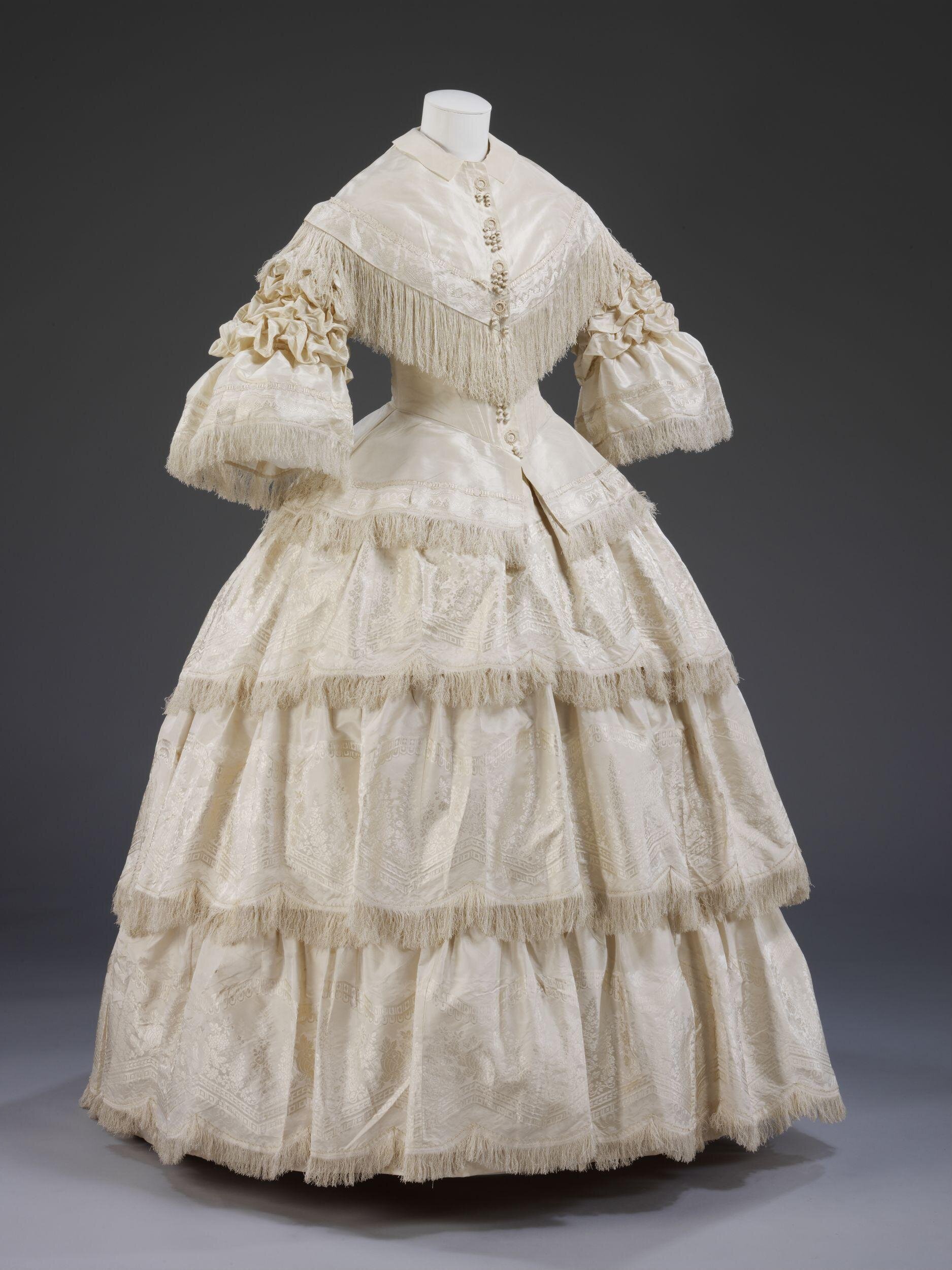
Ha! That is a really good way to look at it! A lot of fashion historians have commented on her costumes as well but I didn’t have the space to get into each and every critique! Thank you for reading and for the insight!
The weird pre-Regency costumes worn by “Queen Caroline” also threw me. Once I decided the costumes were as historically accurate as the ones in “The Lord of the Rings” I was okay.